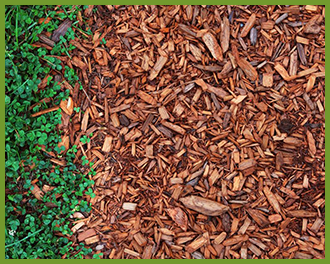%20(18).png?width=2160&height=1000&name=Untitled%20(2160%20%C3%97%201000%20px)%20(18).png)
The Southwest is a beautiful place, and though we live in an arid environment, we welcome any greenery, especially from our grass lawns. So whether we use lawns to practice a golf swing, toss the football around with our kids, or just like the way the green color contrasts with the natural scenery, keeping it lush and green all year long takes a little effort. Of course, rising to the challenge of keeping it green all year long brings many rewards, so keep on reading to know how to properly reseed for winter lawns so that you can achieve the best results!
Fill in Areas That Were Damaged During Summer Months
Overseeding, we do it to help fill in those areas that were damaged during the summer months so that it can revive your lawn. Of course, many homeowners in our area keep their grass green all year long by planting Ryegrass in the fall and Bermuda grass in the spring. What is the best grass seed? One of the best methods to keeping a grass lawn green through the Southwest winter is overseeding with Perennial Ryegrass.
Ryegrass is a beautiful dark green lawn, which is why many around here feel that winter lawns are much more attractive than summer lawns! So, when is the best time to reseed for winter lawn? In our area, the cool fall nights make for the perfect planting weather. In fact, once the temperatures in Arizona and Las Vegas get anywhere from the low to mid 60’s and into the 70’s, we can overseed! The reason you want to reseed when the temperatures are cooler is that the sun can bake the seedlings. The window of opportunity is small, so be sure to keep this in mind!
RESEED FOR WINTER LAWN: Step-by-Step!
 1. Scalp and dethatch: first things first, you need to cut that summer grass back and thin so that it allows room for your new grass to grow. The removal of thatch and leaf accumulation ensures that the seed gets down to the soil. Yes, you might have to mow your lawn two or three times to get the grass down to the preferred ¼-inch to ½-inch height, so if you have got children that want to earn some extra cash, this might be an excellent opportunity to instill some good work habits!
1. Scalp and dethatch: first things first, you need to cut that summer grass back and thin so that it allows room for your new grass to grow. The removal of thatch and leaf accumulation ensures that the seed gets down to the soil. Yes, you might have to mow your lawn two or three times to get the grass down to the preferred ¼-inch to ½-inch height, so if you have got children that want to earn some extra cash, this might be an excellent opportunity to instill some good work habits!
2. Seeding: once the grass is at the preferred height, you can start to spread the Ryegrass seed (our Moon Valley Nursery pros always recommend using Perennial Ryegrass because it is the best choice for Arizona and Nevada.) Spread the seeds half in one direction and the other half in a direction that is perpendicular to the first because doing this will minimize overlap and skips. For best results spread the seeds as evenly as you can.
3. Fertilize: before you turn on the water, be sure to fertilize. Feel free to speak with any of our in-house experts, and we will be glad to help you select the perfect fertilizer. We carry the perfect blends at any of nurseries for the best results!
 4. Mulching: we recommend applying mulch if you do not have a good irrigation system, if you do not have an easy way, such as a timer, that can water 4-5 times a day, or if the temperatures have cooled down too fast. A well-composted mulch (available at all of our nurseries) will help to retain moisture and heat, all things necessary for germinating perennial Ryegrass. Once you have spread the seed, you will want to spread the mulch evenly over the entire lawn and do it to 1/8-inch to ¼-inch thickness.
4. Mulching: we recommend applying mulch if you do not have a good irrigation system, if you do not have an easy way, such as a timer, that can water 4-5 times a day, or if the temperatures have cooled down too fast. A well-composted mulch (available at all of our nurseries) will help to retain moisture and heat, all things necessary for germinating perennial Ryegrass. Once you have spread the seed, you will want to spread the mulch evenly over the entire lawn and do it to 1/8-inch to ¼-inch thickness.
5. Water: when reseeding for a winter lawn it is critical that you water because maintaining a moist seedbed for 7 to 10 days will allow the seed to germinate. Water about four to five times a day but be sure not to leave any puddles or any dry spots. Don’t worry, once the seed has germinated and grown to a height of ¾-inch to 1-inch, you can reduce the watering to 2 to 3 times and day, and after 10 to 14 days, you will want to reduce watering to once a day. Once your new lawn is established, you can water every other day in the winter.
6. Mowing: yep, your mower is getting some nice wintertime action! With your new beautiful winter lawn, the first mowing should happen at the 10th to 14th day after germination. To prevent pulling out your new young seedlings, never remove more than 30-percent of the leaf at one time. You will want your first cut to be at the height of about ¾-inch to 1-inch, of course, if you like a higher lawn then you ought to mow 14 to 21 days after germination.
7. Nutrition: winter lawns require feeding too, so be sure to ask any of our Moon Valley Nursery pros for the best fertilizer to feed your new lush and beautiful winter lawn!
 Ratios:
Ratios:
- Seed: 1 lb per 100 sq ft (always lay down a little extra.)
- Topper: 1 cu ft per 100 sq ft
- Mulch: 2 cu ft per 100 sq ft
- Starter Fertilizer: 1 lb per 200 sq ft
- Moon Royale: 1 lb per 200 sq ft
- Moon Green: 1 Gal per 500 sq ft
Submit a Comment